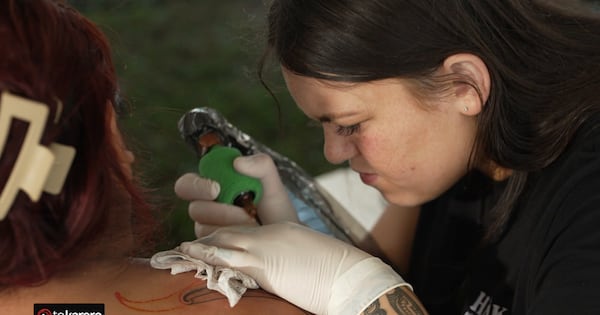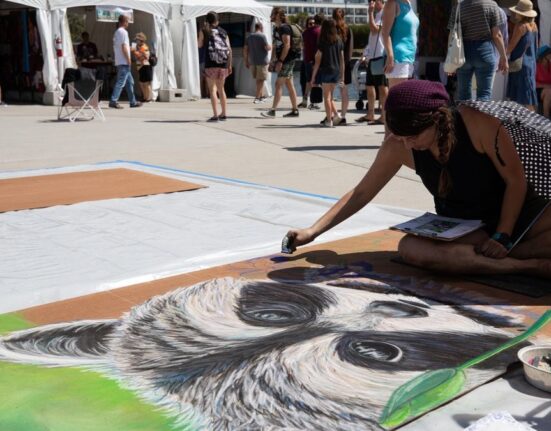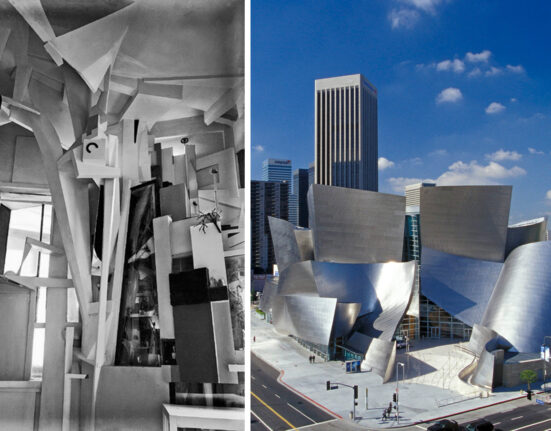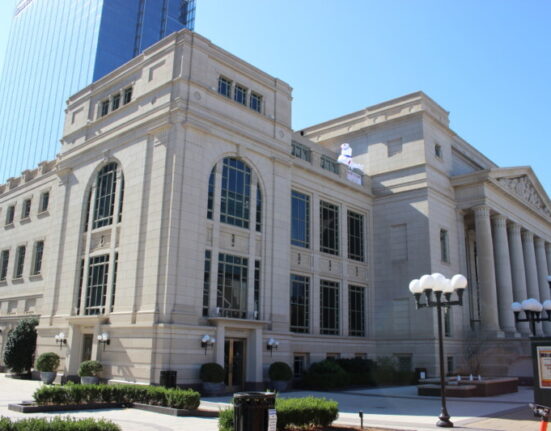A group of Māori performance and visual artists are showcasing traditional Māori arts and crafts at an indigenous arts festival in the US.
The American Indigenous Arts Celebration — held as part of Native American Heritage month — celebrates the art, music, food, and dance of the local Seminole Tribe and Indigenous people.
The festivities are held at the Ah-Tah-Thi-Ki Museum on the Big Cypress Seminole Reservation, in Florida, and is hosted by the Seminole.
Haka Māori Cultural Experience (Haka MCE), a Waikato-based group supported by Tainui Waka Tourism, sent a delegation of 20 people to take part in the festival, giving event-goers a glimpse into te ao Māori.
Haka MCE director Craig Muntz said the delegation comprises of artists demonstrating tā moko and kirituhi, whakairo, raranga and poi, among other practices.
“We’ve also got the visual arts represented with Regan Balzer working in collaboration with our Seminole whānau and with our taonga puoro artist as well,” he said.
“This year we have Horomona Horo working in with Regan and local Seminole artists providing a wonderful storytelling narrative through their live performing arts.”
Tribal historic preservation officer Tina Osceola said the festival, one of their “premiere events”, is aimed at celebrating indigenous traditions.
“It’s the same time we can bring the tribal members, our friends and family out and we can showcase not only our culture but the culture of indigenous peoples across the world to the non-indigenous who live around us,” she said.
Tā moko artist Cheyenne Knox-Novo found value in listening to the stories from her recipients who “have been through a lot”.
The 22-year-old said some spoke of their trauma, of growing up in families that have lost the culture and are on a journey to “bring it back”.
“It’s interesting – as a young woman – to hear about their stories and what they’ve been through,” she said.
She was adamant that the process of receiving a tā moko helps recipients to heal.
“I feel like a lot of them can’t put it into words so putting it into a picture, or something more than a picture, it does help with healing.”
Learning opportunities
The group were also invited to Florida International University where they held a kapa haka performance and displayed Māori arts and crafts.
Mitzi Uehara Carter of the Global Indigenous Forum, an organisation that creates space for indigenous issues on campus, said by the very nature of the university’s name they were “absolutely interested in the experiences and stories and narratives of other people from all over the world”.
“So this is a great opportunity for students to really be a part of and engaged,” she said.
The group attracted a crowd of students who were encouraged to participate in haka and engaged in discussions with the Māori artists present.
PhD student Andrea Sanchez-Castañeda said it was her first time seeing Māori culture in the flesh. She said she loved seeing the “cultural material of the community because it represents the historical memory put into an artefact”.
“I think that’s very powerful and it brings the possibility to non-indigenous peoples to see part of the indigenous cultures in an object.”
Sanchez-Castañeda is researching the Muisca people of Colombia and their territorial struggles for sovereignty in the middle of the country’s capital, Bogotá.
She believes it’s important for indigenous peoples to have “these platforms where they’re able to perform their identity in different spaces around the world”.
“Because that’s what indigenous peoples need, they need realisation so that they are not forgotten by other citizens. They have to know that there are indigenous peoples right now struggling for land, struggling for sovereignty and recognition.”
‘Building that kinship’
While the American Indigenous Arts Celebration brought the delegation to the US, Muntz said the trip itself is an opportunity to gain knowledge.
“There’s significant learning throughout the three weeks we’ve been here – it’s actually a three-week wānanga,” he said.
“You know, some of our whānau think, ‘oh, they’re on holiday’ but you know, it is a lot of mahi. But it’s wonderful mahi, it’s beautiful mahi, and it’s uplifting.
“Through that process we’re not only uplifting ourselves, we’re uplifting our whānau here in Seminole country.”
The high level of respect is shared between the Māori delegation and their Seminole hosts and Osceola hopes it will foster a strong bond between the two peoples.
“I’m really hoping that the relationship that we forge with the Māori and our Māori friends – it’s family, that is building that kinship.”
She said while a sense of kinship began through the celebration, “that doesn’t mean that it ends there”.
“It means that we have this common bond that’s gonna last forever, and it should last generations.
“Hopefully, descendants are going to be able to look back and they’re going to know that they have family across the world, on the other side of the globe, that share similar issues with us.”
Osceola pointed to the Māori and Native American people’s shared “relationship with our natural environment, that we have this relationship between our culture and our environment, they’re inextricable – it’s one and the same”.
“It doesn’t matter whether you’re in southwest Florida or you’re in New Zealand, the fight is there for cultural survival and we know that we’re not alone.
“This kinship that we have with the Māori lets us know that.”
Glossary
Tā moko – traditional Māori tattooing
Kirituhi – tattoo for people of non-Māori heritage
Whakairo – to carve, carving
Raranga – weave, weaving
Taonga puoro – musical instrument(s)
Mirimiri – massage, traditional Māori healing practice






